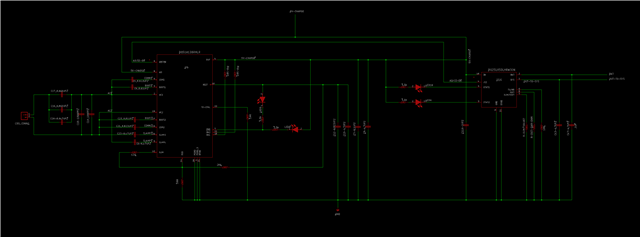Other Parts Discussed in Thread: BQ25185, BQ24072, BQ51050B
Hi Bill, (I hope this reaches you, since we had already talked about)
Following your suggestion, I am modifying the charger system, using now a BQ51013B and a BQ25185 together, to charge a 1 Cell LiFePO4 Battery.
Here are the key-specs of the batt:
- Nominal Capacity 600mAh At 0,2C CC discharge
- Minimal capacity 600mAh
- Nominal Voltage 3.2V
- Charge voltage 3.65V Max. 3.8V
- Standard Charging
0.5C Standard 2.5 hour nominal
1C max. 1.5 hour rapid
- Cell internal impedance ≤102Ohm Measured at 1khz after 50% Charge
- Charging temperature 15 – 25°C Maximum 0 - 45°C
-Standart Charge
Charging cell initially with constant current at 0.5C to 3.65V,
then with constant voltage at 3.65V
till charge current is below 0.02C
-----------------------
And here a preliminary circuit:

The questions I have are:
- Could you please check, if the circuit is ok like this?
and for the BQ25185:
- I cannot find a way to ILIMt to be 600 mA by having VBATREG 3.65V
The table on P.16 of the data sheet has several values for RILIM/VSET, where ILIM changes between 500 and 1100 mA.
How do I get something in between? And how is VBATREG set?
- The last question refers to the SYS Voltage.
The data sheet says, the voltage is regulated to 4.5V
I only need 2.4V here, since I have an LDO afterwards to regulate the voltages I need in the Load.
Internally pulling the battery voltage high, only to pull it down externally again does not seem to be wise in terms of power dissipation to me.
I cannot find any mention to noise in the data sheet. I suppose, the process is generating some ripple...?
Sorry, too many questions...
Best regards and anticipated thanks for the help,
Gustavo
PS: I changed the circuit image. I had attached an older version.


